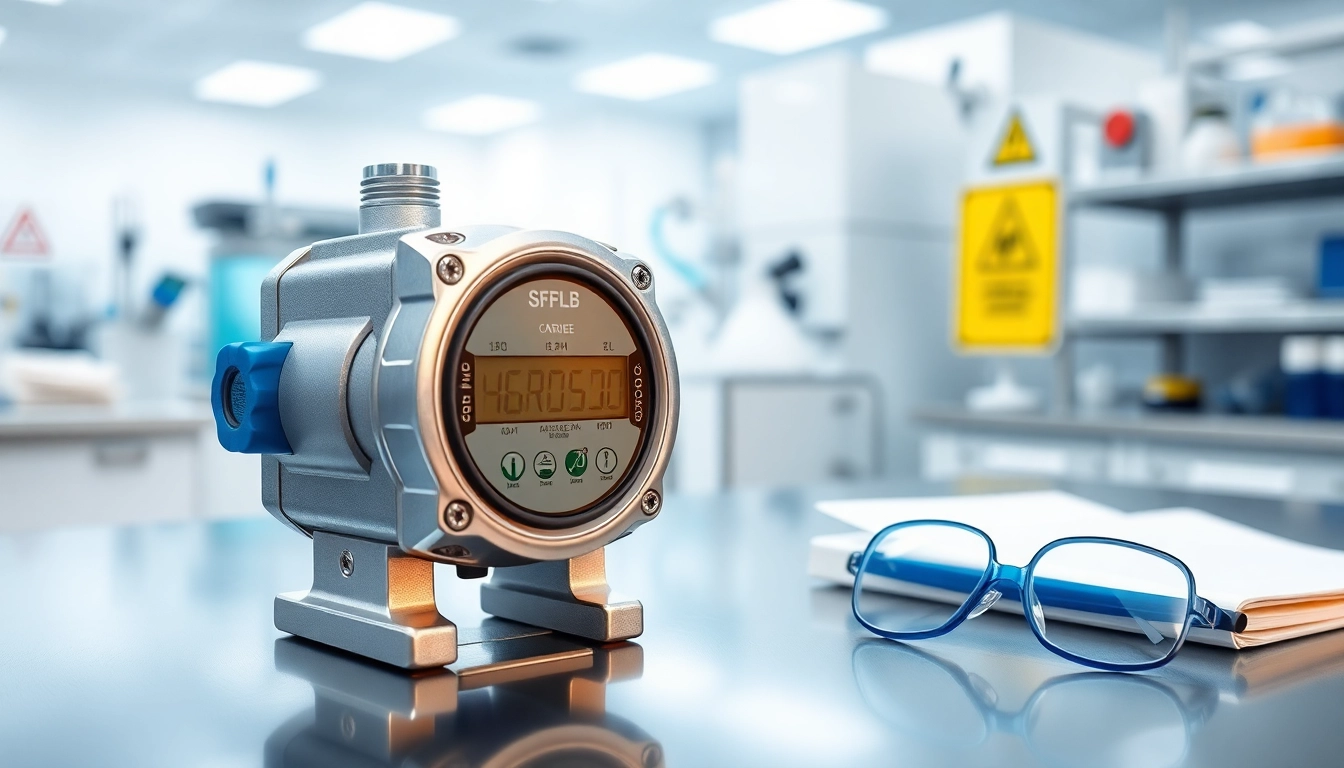Understanding the Importance of Hydrogen Bromide Gas Detectors for Workplace Safety
What is a Hydrogen Bromide Gas Detector?
A Hydrogen Bromide gas detector is an essential tool used in various industrial settings to detect and measure the concentration of hydrogen bromide (HBr) in the atmosphere. Hydrogen bromide is a colorless gas that can pose significant health risks to those exposed to it. Thus, these detectors are critical in maintaining workplace safety and compliance with relevant regulations.
The Science Behind Hydrogen Bromide
Hydrogen bromide is a chemical compound composed of hydrogen and bromine. It is highly soluble in water, forming hydrobromic acid when dissolved. This substance is corrosive and can cause severe damage to respiratory organs, skin, and eyes upon exposure. At room temperature, HBr is a gas, and its pungent odor can serve as a warning sign; however, relying solely on smell is not safe. The gas is often used in the production of pharmaceuticals, pesticides, and various chemical syntheses, which underscores the need for reliable detection methods.
How Hydrogen Bromide Gas Detectors Work
Hydrogen bromide gas detectors operate using different sensing technologies, which include electrochemical sensors, infrared sensors, and metal oxide sensors. Each technology has distinct working principles:
- Electrochemical Sensors: These are widely used due to their sensitivity and specificity. They function by measuring the current produced by the oxidation or reduction of HBr at the sensor electrode.
- Infrared Sensors: These detectors identify HBr concentration by measuring the absorption of infrared light by hydrogen bromide molecules. The amount of light absorbed correlates with gas concentration.
- Metal Oxide Sensors: These devices detect changes in resistance brought on by the interaction between HBr gas and a coated metal oxide layer in the sensor. When HBr binds to the metal oxide, it alters its electrical resistance, which is then measured.
Types of Hydrogen Bromide Gas Detectors
There are various types of hydrogen bromide gas detectors designed for specific applications and environments:
- Portable Detectors: Ideal for use in mobile applications, these detectors allow workers to carry them easily for personal protection while moving through potentially hazardous areas.
- Fixed Detectors: Installed in strategic locations within industrial facilities, fixed detectors continuously monitor the atmosphere for hydrogen bromide and trigger alarms when dangerous levels are detected.
- Multi-gas Detectors: These versatile devices can detect several gases simultaneously, including hydrogen bromide, making them useful in environments where multiple hazards may be present.
Why is Hydrogen Bromide Gas Detection Crucial?
Detecting hydrogen bromide is not just a matter of safety; it is essential for a multitude of reasons, including health, compliance, and operational integrity.
Health Risks Associated with Hydrogen Bromide
Exposure to hydrogen bromide can lead to severe health issues. Short-term exposure can cause irritation of the eyes, throat, and skin, while long-term exposure might lead to more serious respiratory issues and chronic conditions. The Occupational Safety and Health Administration (OSHA) has established permissible exposure limits (PEL) for HBr, emphasizing the necessity of detection to prevent health hazards.
Compliance and Regulatory Standards
Industries that use hydrogen bromide must adhere to strict regulatory standards set by agencies like OSHA and the Environmental Protection Agency (EPA). These regulations mandate regular monitoring of hazardous substances, including HBr, in the workplace. Failure to comply can lead to legal penalties, financial losses, and increased liability in the event of an accident. Adopting appropriate gas detection measures not only ensures compliance but also fosters a culture of safety within the organization.
Real-World Case Studies
Examining real-world case studies can provide insight into the importance of hydrogen bromide gas detectors:
- Case Study 1: In a pharmaceutical manufacturing plant, failure to monitor hydrogen bromide levels led to a serious incident where several employees suffered from respiratory issues due to prolonged exposure. Post-incident investigations revealed the absence of adequate gas detection systems.
- Case Study 2: A chemical research laboratory implemented fixed hydrogen bromide detectors after witnessing an increase in respiratory complaints among staff. The detectors effectively triggered alarms during peak usage times, significantly reducing exposure-related incidents.
Choosing the Right Hydrogen Bromide Gas Detector
Selecting the appropriate hydrogen bromide gas detector requires careful consideration of various attributes that align with specific operational needs.
Key Features to Consider
When evaluating hydrogen bromide gas detectors, important features to consider include:
- Detection Range: Ensure the detector can measure HBr concentrations in the appropriate range for your specific application.
- Response Time: A shorter response time is critical for safety, as it allows for quicker warnings when gas levels become hazardous.
- Alarm Systems: Look for detectors with reliable alarm systems to alert personnel upon detecting dangerous levels of gas.
- Calibration Procedures: Consider detectors that offer easy calibration methods, ensuring accuracy over time.
- Durability and Environmental Resistance: Assess the resilience of the device to environmental factors such as humidity, temperature, and chemical exposure.
Cost vs. Quality Considerations
When selecting a hydrogen bromide gas detector, it’s vital to balance cost and quality. Cheaper detectors may save money initially but can lack reliability, leading to potentially hazardous situations. Investing in high-quality detectors often pays off in terms of accuracy, safety, and durability. Conducting a cost-benefit analysis can help organizations make informed decisions.
Supplier Recommendations
When seeking a reliable hydrogen bromide gas detector supplier, consider companies with established reputations for quality and service. Look for those who provide comprehensive technical support, warranties, and training resources for users. Some reputable manufacturers include:
- Honeywell Analytics
- Dräger
- MSA Safety
Best Practices for Using Hydrogen Bromide Gas Detectors
Implementing best practices in the use of hydrogen bromide gas detectors can optimize their effectiveness in safeguarding workplace safety.
Installation Guidelines
Proper installation is paramount for accurate gas detection. Consider the following guidelines:
- Install detectors in areas where hydrogen bromide is likely to accumulate.
- Follow manufacturer instructions for height and positioning to ensure optimal detection.
- Regularly assess environmental factors that may impact readings, such as air circulation and potential obstructions.
Calibration and Maintenance Tips
To maintain accuracy, diligent calibration and maintenance of hydrogen bromide detectors are essential:
- Perform regular calibration checks according to the manufacturer’s recommendations.
- Maintain a log of calibration dates and results to monitor the device’s accuracy over time.
- Inspect all components frequently for wear and tear, replacing parts as necessary to ensure reliability.
Training for Effective Use
Training personnel in the effective use of hydrogen bromide gas detectors is critical. Training programs should cover:
- Understanding the device’s functionality and operational protocols.
- Recognizing the significance of alarm signals and appropriate responses.
- Safety protocols to follow in case of a gas leak or alarm activation.
Future Developments in Hydrogen Bromide Detection Technology
The field of gas detection technology is continually evolving, promising advancements that may enhance the effectiveness and safety of hydrogen bromide detection.
Innovative Technologies on the Horizon
Emerging technologies, such as enhanced sensor materials and next-generation sensors, are being developed to improve the accuracy and reliability of hydrogen bromide gas detectors. These innovations may involve miniaturized sensors that offer greater sensitivity and can be integrated into smart monitoring systems.
Impact of AI and IoT on Gas Detection
The integration of Artificial Intelligence (AI) and the Internet of Things (IoT) is set to revolutionize gas detection systems. AI can help analyze historical data to identify patterns and predict potential gas leaks, while IoT devices can enhance real-time monitoring and streamline communication between detectors and other systems, offering immediate alerts through connected devices.
Anticipated Regulatory Changes
As industries evolve, so do regulatory landscapes. Anticipated changes may impose stricter limits on hydrogen bromide exposure and encourage increased usage of advanced detection technologies. Keeping abreast of these regulations will be crucial for organizations to maintain compliance and ensure the safety of their employees.



